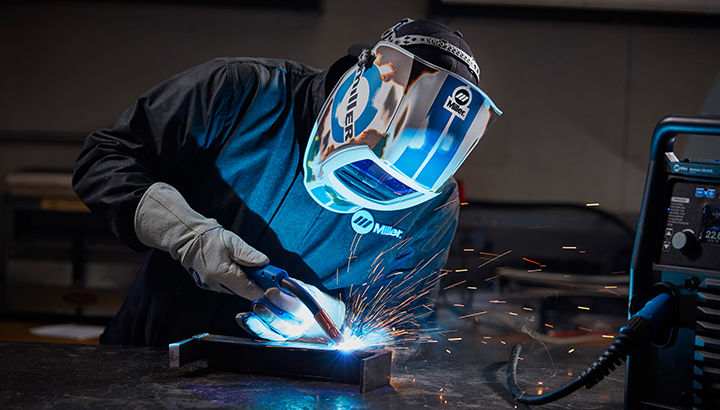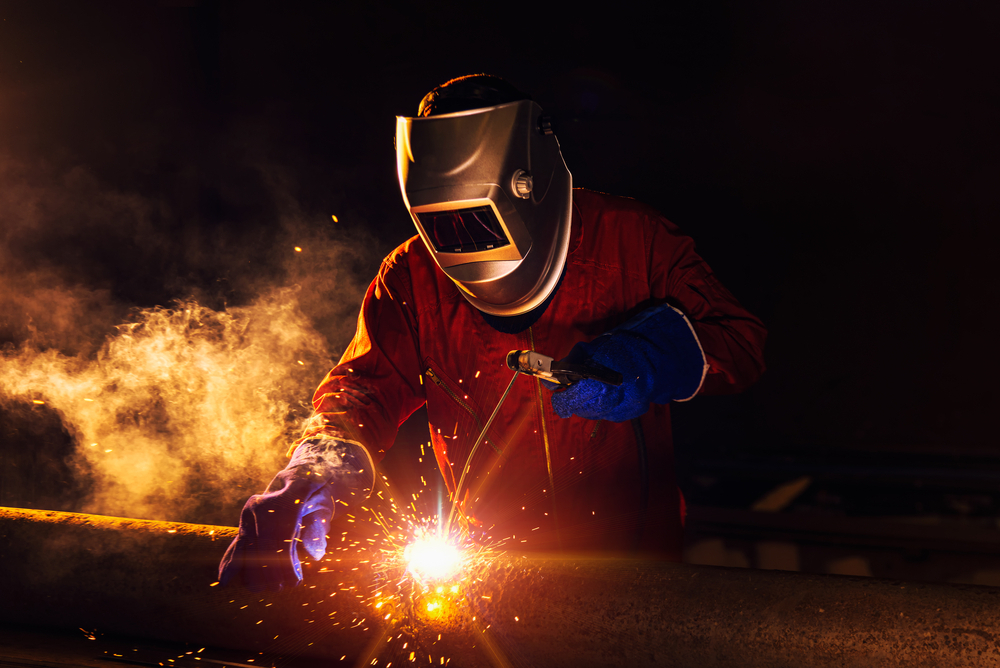Typical Welding Repair Service Issues and Exactly How to Address Them Effectively
Welding repairs typically experience a series of problems that can endanger the honesty of the end product. Common problems include poor penetration, porosity, and imbalance, among others. Each problem provides one-of-a-kind challenges that need details strategies for resolution. Recognizing these issues is important for welders intending to boost their abilities and results. This conversation will check out these typical welding repair problems and efficient approaches to resolve them.
Poor Infiltration
Poor infiltration occurs when the weld steel stops working to fully fuse with the base product, leading to weak joints and prospective structural failings. This concern typically originates from not enough warmth input, incorrect electrode angle, or incorrect welding rate. Welders may run into poor penetration due to a mistake of the essential specifications for a particular product density or kind. Furthermore, contamination on the base product's surface can prevent effective bonding, exacerbating the problem. To address inadequate penetration, welders should ensure proper setups on their devices and keep a clean job surface. Normal inspection of welds is recommended to identify any type of shortages early, permitting prompt improvements and the prevention of compromised structural honesty in bonded settings up.
Porosity
Porosity is an usual problem in bonded joints that manifests as little gas bubbles caught within the weld steel. This defect can jeopardize the honesty of the weld, bring about reduced strength and possible failing under stress and anxiety. Montana Mobile Welding and Repair. Porosity generally occurs from contamination, wetness, or incorrect welding strategies, which permit gases to get away into the liquified weld pool. To attend to porosity, welders should guarantee appropriate surface area prep work, keep a clean workplace, and use suitable welding parameters. Furthermore, selecting the right filler product and shielding gas can minimize gas entrapment. Normal inspection and testing of welds can help identify porosity early, guaranteeing prompt restorative activities are taken, thus maintaining the high quality and dependability of the bonded framework
Imbalance
Imbalance in welding can arise from numerous variables, consisting of improper configuration and thermal growth. Understanding the source is vital for effective resolution. A number of improvement strategies are readily available to realign parts and ensure architectural integrity.
Reasons of Misalignment
Welding misalignment typically stems from a range of underlying issues that can jeopardize architectural honesty. One main reason is inappropriate fit-up of parts before welding, which can lead to voids and unequal surface areas. Variations in thermal expansion during the welding procedure can additionally lead to distortion, particularly if the products being signed up with have different coefficients of development. Additionally, poor clamping and fixturing may fall short to hold parts firmly in location, bring about activity throughout welding. Improperly maintained devices, including welding makers and devices, may introduce variances in the weld bead, further contributing to imbalance. Finally, driver mistake, stemming from not enough training or experience, can also play a significant duty in creating misaligned welds.
Correction Strategies Offered
Resolving misalignment effectively needs a mix of corrective strategies customized to the details problems at hand. One common technique is using fixtures or jigs to hold components in the right position during welding, ensuring regular positioning. In addition, pre-heating the products can assist decrease distortion and improve fit-up. For significant imbalance, mechanical adjustment strategies, such as making use of hydraulic jacks or clamps, can be utilized to deal with the setting prior to welding. Post-weld warm therapy might likewise be needed to ease tensions caused by misalignment. Careful assessment and modification during the configuration stage can prevent imbalance issues from ending up being considerable issues, promoting a smoother welding procedure and enhancing general architectural stability.
Distortion
Distortion is an usual obstacle in welding that can emerge from different variables, including unequal heating and cooling. Understanding the sources of distortion is important for executing reliable prevention methods. Addressing this issue not just enhances structural stability but also boosts the overall quality of the weld.
Reasons of Distortion
When subjected to the extreme warm of welding, products typically go through modifications that can cause distortion. This phenomenon mainly emerges from thermal development and contraction during the welding procedure. As the weld location heats up, the product increases; upon cooling, it contracts, which can create interior anxieties. Furthermore, irregular home heating across a workpiece can worsen these tensions, leading to bending or bending. The kind of material also plays a considerable role; metals with varying thermal conductivity and coefficients of development may respond differently, bring about unforeseeable distortions. Bad joint design and poor fixturing can contribute to imbalance during welding, enhancing the likelihood of distortion. Understanding these reasons is essential for effective welding repair service and avoidance methods.
Prevention Techniques
Efficient avoidance techniques for distortion during welding concentrate on controlling warm input and making sure appropriate joint layout. Maintaining a regular warm input assists to minimize thermal growth and tightening, which can result in distortion. Making use of methods such as preheating the workpiece can also lower the temperature level slope, advertising uniform heating. In addition, selecting ideal joint designs, such as T-joints or lap joints, can boost security and reduce stress focus. Carrying out appropriate fixturing to protect the work surfaces in position better aids in keeping placement throughout the welding procedure. Ultimately, staggered welding series can disperse heat more evenly, stopping local distortion. By applying these approaches, welders can greatly decrease the possibility of distortion and boost the total top quality of their welds.
Breaking
Cracking is a common issue experienced in welding repairs, commonly resulting from different aspects such as inappropriate air conditioning prices, product choice, or insufficient web link joint preparation. The incident of splits can considerably jeopardize the honesty of the weld, resulting in possible failures throughout operation. To resolve this problem, welders have to initially assess the root creates, guaranteeing that products are compatible and appropriately picked for the details application. Furthermore, managing the air conditioning price throughout the welding process is necessary; rapid air conditioning can induce stress and cause breaking. Correct joint style and prep work likewise add to decreasing the risk. Carrying out these techniques can enhance weld high quality and durability, ultimately lowering the probability of cracking in completed weldments.

Insufficient Fusion
A substantial concern in welding fixings is insufficient combination, which happens when the weld metal does not effectively bond with the base material or previous weld passes - Montana Mobile Welding and Repair Fabrication. This problem can bring about weaknesses in the joint, possibly compromising the integrity of the welded structure. Aspects contributing to incomplete blend consist of link not enough heat input, inappropriate welding method, and contamination of the surfaces being signed up with. To address this concern properly, welders need to guarantee appropriate pre-weld cleaning and surface area preparation, along with change their welding criteria to accomplish adequate penetration and blend. Routine examination during the welding process can additionally assist identify insufficient fusion early, enabling timely restorative steps to boost the overall top quality of the weld
Overheating
While welding repair services can enhance architectural honesty, overheating presents a significant challenge that can lead to material deterioration. Excessive warmth during welding can alter the mechanical properties of steels, resulting in minimized strength, raised brittleness, and warping. This phenomenon is especially important in high-stress applications where structural integrity is vital. Identifying overheating can involve aesthetic assessments for discoloration or distortion, in addition to checking temperature throughout the welding process. To mitigate the threats connected with overheating, welders need to use ideal methods, such as regulating heat input, readjusting traveling speed, and making use of suitable filler materials. Additionally, executing pre- and post-weld heat treatments can aid bring back material residential or commercial properties and improve the overall high quality of the repair service, making sure lasting performance and safety.
Often Asked Concerns
What Are the Common Indications of a Welding Issue?

Just How Can I Evaluate My Welds for High quality?
To evaluate welds for top quality, one can utilize aesthetic inspections, ultrasonic screening, and radiographic approaches. Each strategy assures architectural integrity, recognizes flaws, and confirms adherence to specified criteria, eventually improving the reliability of the welded joints.
What Safety and security Safety Measures Should I Take While Welding?
When welding, one need to focus on safety and security by putting on proper individual protective devices, guaranteeing appropriate air flow, safeguarding flammable products away, keeping a clean work area, and being mindful of surroundings to avoid mishaps and injuries.
Can I Repair a Weld Without Redesigning the Entire Joint?
Fixing a weld without redesigning the entire joint is feasible, depending upon the damage (Montana Mobile Welding and Repair Welding). Methods such as grinding, adding filler product, or using a welding procedure can properly deal with specific problems while maintaining the bordering framework
What Devices Are Important for Efficient Welding Repairs?
Essential tools for efficient welding fixings consist of a welding machine, cord brush, mill, protective equipment, clamps, and filler products. Each tool plays an important role in making sure high quality and security during the repair procedure. Porosity generally occurs from contamination, wetness, or incorrect welding methods, which permit gases to leave into the liquified weld pool. Improperly maintained equipment, including welding equipments and devices, might introduce variances in the weld grain, further contributing to misalignment. When subjected to the intense heat of welding, products often go through changes that can lead to distortion. Cracking is a typical issue experienced in welding fixings, commonly resulting from various aspects such as inappropriate cooling rates, material selection, or inadequate joint preparation. A significant problem in welding repairs is insufficient combination, which takes place when the weld steel does not appropriately bond with the base product or previous weld passes.
Comments on “The role of heat can do for distortion prevention in Montana Mobile Welding and Repair Fabrication”